Grief Made Me Question Whether To Start A Family
An overdue essay centered around the choice to start a family after insurmountable grief
More than a month ago, in between cleaning up vomit and holding back my five-year-old daughters’ golden hair over a toilet, I read
’s personal essay, “In the Midst of Public Catastrophe, I Was in My Own Private Disaster,” published in Electric Lit this past January.Her story is striking—honest, real, haunting, and hopeful—like the stories of the mothers I’ve interviewed for the last couple of months surrounding the topics of birth trauma and postpartum depression and anxiety, and, after reading her piece, I realized how the birth of my first daughter felt like, as Fontaine coins her experience of dealing with the aftermath of her mother’s massive stroke while also surviving a devastating Alabaman tornado in 2011, “a disaster within a disaster.”
March 13 of this past year marked the five-year anniversary of COVID, so I’ve also been lost in thought, remembering what that experience was like, trying to piece together that wild and weird time, trying to reconcile my own personal disaster within a public one.
It’s challenging to articulate what that experience of becoming a mother during a global pandemic was like, and the only similarity I can draw is that of the loss of my 14-year-old brother, except for instead of grief, there was joy, and instead of joy, there was grief, in different, unaligned, and incongruous ebbs and flows. When I go to access memories from that time—like I have attempted to do that first year after Preston’s abrupt exit on May 9, 2015—images are hazy, obscure, or non-existent.
An impossibly small grasp of my thumb from a tiny human whom my husband and I created together, whom I carried, and whom I pushed out of the tiniest slot in my body. A thoughtfully-crafted peanut butter toast with fresh-cut strawberries, a swirl of honey, and a dash of cinnamon made by the only person with whom I shared and with whom understood this unknown baby world—our world—for months on end. Rays of golden sun flooding into our cramped apartment, trickling through the clean windows, dancing with the shadows of houseplants and dusty blinds, delighting our fresh-faced girl and reminding us that hope existed, still lived, in the exchange of days and nights that came and went and fed our hungry, sleep-deprived souls.
Before deciding to try for a baby, I was conflicted about bringing new life into the world, or rather, bringing new life into my life. After all, was I even still alive?
At one point, I thought not.
Following my brother’s death, I moved through the Earth like the shell of a human, experiencing this so-called life as an apparition floating outside of my body, just above my head, gaining what felt like a bird’s eye view of daily happenings: ordering iced lattes with oat milk at the new neighborhood cafe on my way to work, teaching full classes of rambunctious middle schoolers, then strolling through Central Park or Gantry by the East River to decompress after a hectic workday.
Maybe I was a bird now and not a human being anymore at all?
I thought if I became a mother and failed to re-enter my body, one laden with grief, would I even be able to care for a child? Would I pass down what felt like this awful curse, or would motherhood be the thing that’d break it?
I decided to give it a shot—not only for my sake (or my husband’s)—but for the sake of my mother and three surviving (ugh, I hate that term) sisters. I was desperate to bring hope, love, and joy back into my life—back into our collective lives—just to prove to the world that I loathed at the time, that it was possible, that just because it bred what felt like all-consuming pain and suffering, what felt like never-ending and debilitating grief, that’s not all it did.
For example, it produced Preston. It produced my other siblings. It produced love and magic and wonder.
I so badly wanted to shift that stale and sad chapter of my narrative to manufacture my own calm in the storm—my own eye of the ‘cane. I was a human being recovering from an onslaught of tragedies: my brother’s unthinkable suicide, my parents’ acerbic divorce, and my maternal grandparents’ untimely deaths.
Was a life worth living if not actually lived—if not taking in and noting what one notices?
The budding bloom of a rose bush. The re-arrangement of a classic by a talented subway musician. The transcendence of a perfectly-baked chocolate croissant.
I admit with timidity that my nightly prayer for that first year or two after Preston’s Earth-swallowing death was that I’d not wake the next day.
How was it possible for this person—a person who prays this prayer—to conceive, carry, and raise a child? Was I being careless in bringing another human being into this world of grief, of pain and suffering?
Of course, I knew there was still love and light. I knew there was still hope and beauty out there, somewhere, likely in the form of a baby. After all, this was an age-old truth. The world is full of dichotomies. Surely, those concepts alone would be enough to go through with the whole charade, right? Right???
Something in me believed the possibility existed and was even within reach—viable—so, with the help of acupuncture treatment and a stern determination to discover this truth, I took the risk.
I opened my heart.
It took sixteen excruciating months for my body to naturally conceive, to do what it was theoretically designed to do. And, throughout my pregnancy, everything reminded me of the precious ones that were no longer living: my sweet brother, my gentle Granny, my hilarious Papa.
If I heard “Build Me Up Buttercup,” a grainy movie would play in my head of my brother shimmying a silly jig, donning a pair of Blues Brothers-style sunglasses and a ridiculous wig while grasping a hairbrush like a microphone, loudly belting the catchy tune, and I’d remember that my child would never know their “funcle,” a term that may have not been popularized at the time of his death but would have certainly been used to describe my daughter’s relationship to him.
If I passed a bakery and smelled that heavenly aroma of fresh-baked pound cake, tears would begin to form along with a picture of my mom’s mom in her humble kitchen, reciting Psalms 23, as she deposited an unbaked masterpiece into the oven, and I’d remember that my child would never hear that soft recitation, never smell her gardenia perfume, never know the safety of her arms.
If I peeled an orange, that unmistakable smile would come into view, and I’d hear that distinct and splendid cackle of my Papa’s laugh, and I’d see those hazel-green eyes, the eyes that were the givers of my own, and I’d remember that she would never lock eyes with those beauties—ever.
All of these spontaneous and fervent reminders made me wonder if I had made the wrong choice to follow through with the whole “starting a family” thing, because, behind them, behind that laughably shallow layer—thin as paper—was an encyclopedia of grief, an atlas of heartbreak.
When I was 36 weeks pregnant with my first child, my heart’s rawness matched my mind and my body’s and what felt like the world’s, too.
And, on top of this seemingly private disaster of mine—an unknowing if I could, in fact, be a sufficient mother, a good mother—was a developing public disaster, a meandering and invisible virus, that manifested like a carbon-copy, a mirror, of the wreckage of my own personal disaster—hence, “a disaster within a disaster.”
Joan Didion recounts what Episcopalians say at the graveside in her memoir, The Year of Magical Thinking: “In the midst of life we are in death.”
Was life playing yet ANOTHER cruel joke on me? Was death lurking just around the corner?
At the age of 32, I finally decided that the timing was “right” and now this? A circuitous and real threat to my health and the health of my unborn child?
Are you f*cking kidding me?!?!
But, in New York City, on April 14, 2020, I became a mother, whether I was ready to or not, whether I was confident about my decision or not, and, though I wouldn’t choose the word “traumatic” to describe my birth experience, I would describe the environment that I gave birth in as such—with the barrage of sirens blaring down every street, with the cacophony of bells ringing and the waterfall of hands clapping every evening at 7 p.m., with the silent ticking of death counts climbing every hour, and with the pervasive silence in between all of the audible and visual signs of a public health catastrophe, an event that would surely be recorded in digital history books.
The irony was not lost on me how, when we first moved to the Big Apple, the sights and sounds were a source of anxiety, inducing vertigo and panic attacks during those inaugural six months or so, but, now, the muzzling of these stimulants had evolved into a fount of uneasiness.
The characteristic that had once made me question our decision to relocate from Austin had become a comfort, and, now, its disappearance had become a distress.
It was a collision of senses, of familiarities, that left me reeling, terrified. Almost regretful.
And yet, I survived. We survived.
It’s been four years since Erik and I left that iconic city that we once called home, the city that metaphorically died when we crossed the Verrazano Bridge in a loaded 2014 Toyota Sienna XLE. So, naturally, I’ve been reflecting on that time and how, even though it was one of the most difficult circumstances I’ve ever lived through, it was also one of the most beautiful.
My daughter brought that beauty. She brought that light, that spark, that joy that I needed, that I required, to live again. My prediction was spot on, and, yes, I know, I know, that that reads like a tall order, but it’s the God-honest truth.
My theory became fact: it was possible for life to have a happy path again after great sadness—after total devastation.
Following an endless winter came a rejuvenating spring.
It took time and a relinquishment of control, but it arrived right alongside the vibrant blooms of tulips, azaleas, and irises.
As Anne Bradstreet once wrote, “If we had no winter, the spring would not be so pleasant: if we did not sometimes taste of adversity, prosperity would not be so welcome."
To further illustrate my experience, I’d like to share an excerpt of a personal essay that I wrote for
last year titled “How Giving Birth in NYC at the Onset of COVID Changed My Life and Career.”NOTE: The version below has been modified from its original form for the sake of this post.
Parts of my birth story are shared here, and I’d like to give a word of warning that if you’re not in a place to read a birth story right now for myriad reasons, then, please, by all means, stop here.
On Friday, March 13, 2020, a seemingly “ordinary day,” my principal made a school-wide announcement via intercom in the late afternoon. This was a rare occurrence, and it completely caught me off guard. She directed all teachers to pack up and take home any personal belongings or special items before exiting the building that afternoon.
Her uneasy tone made my heart sink—like when the first plane crashed into the North Tower. Was this real life, or was this some kind of strange dream?
Joan Didion also writes about the “ordinary instant” in her memoir: “It was in fact in the ordinary nature of everything preceding the event that prevented me from truly believing it had happened, absorbing it, incorporating it, getting past it. I recognize now that there was nothing unusual in this: confronted with sudden disaster we all focus on unremarkable the circumstances were in which the unthinkable occurred, the clear blue sky from which the plane fell, the routine errand that ended on the shoulder with the car in flames, the swing where children were playing as usual when the rattlesnake struck from the ivy.”
Rumblings of a virus had been circulating the subways and the streets of the city for weeks, but no one wanted to believe it was true. Similar to the Ebola stint, my students immaturely pointed fingers, laughed, and taunted my Chinese students, shouting, “Don’t get near him! He’s got COVID!” Of course, I immediately reprimanded their disappointing behavior, noting the viciousness of middle school culture akin to that of Lord of the Flies, and ruminated on the possible validity of their harsh words:
Was COVID already here in our five-story building in Woodside, Queens?
The truth is, it was. We just didn’t know it yet.
Just a month before my principal’s announcement, my husband had encountered a frazzled finance bro on the train who requested everyone’s attention in order to inform straphangers about a virus spreading from China, urging everyone to prepare, telling them that it was “real” and “serious,” that it would change our daily lives. Because the man looked presentable, unlike NYC’s unhoused, many passengers began to converse after he moved onto the next car on the train. A global pandemic? Nah, dawg. Fuhgeddaboudit. But as we all know now, this modern-day Hermes’ message was true: COVID-19 had landed in the Concrete Jungle and seemingly every corner of the world.
By Sunday evening—March 15—Mayor Bill de Blasio announced that the NYC Department of Education would be shutting its doors to the 1.1 million students that it served, an “unprecedented” decision. The city’s public schools rarely closed for anything, not even for hurricanes or blizzards, so his press conference was like viewing, in real-time, the second plane plowing through the South Tower of the World Trade Center.
“Shit!” I thought, as I watched, wide-eyed, with my moving, melon-sized belly. “This is serious. This is real. This isn’t a dream.”
All came into focus at that moment, and my husband and I saw that, like 9/11, we were living through, yet again, a historic time in our country’s history.
I was 36 weeks pregnant with our first child, and my anxiety shot straight through the three floors above us, straight through the roof that we frequented to take in views of the East River, the Queensboro Bridge, and that unforgettable cityscape. From that point on, I became hyper-fixated on the news and the retrieval of information about the virus (along with my husband, who also began working from home that week): Governor Cuomo’s daily press conferences, medical journals detailing any bit of information on pregnant women or babies who had contracted COVID (mainly from countries like South Korea and Italy), and obsessively texting any other pregnant women that I knew in my neighborhood or friend groups in other boroughs.
At night, questions would swirl through my mind, preventing me from getting the sleep that everyone told me I needed: What would happen if I got COVID? What would happen to my unborn baby? Would I, or we, survive the illness? Would my hospital be a safe place to deliver? Would I give birth without my husband’s attendance? Would my baby and I be separated upon delivery? How would that affect my baby’s development? How would that affect me? Should I deviate from my original birth plan and have a home birth instead? Should I transfer to a birth center? Once all three of us return home and my maternity leave ends, what if I have to return to work? Would it be safe? Would my husband be safe? How would we navigate that and sustain a living in a ridiculously expensive city?
A month flew by—well, time actually stood still that one horrifying week of gastroenteritis—but, you know, after recovering from that and experiencing two hospital stays in order to rehydrate my body, I became more confident in our decision to stay put and stick to the plan: give birth at Mt. Sinai West under the care of doctors I was already acquainted with.
It was April 13, 2020, the day after my due date and also Easter Sunday, when my OB/GYN rang me. The purpose of her call was to relay the findings of some blood work I had drawn the previous week after complaining to my midwife about an intense itching on my wrists and ankles. She then told me in a very matter-of-fact manner that I had cholestasis, a liver condition that can occur in late pregnancy, and that I needed to be induced immediately.
My birth plan was to have a natural birth, so the news was jarring. (Of course, I knew that the plan could change at any time, but I also knew that I’d had a perfectly normal, healthy pregnancy and those chances were quite low at 40 weeks.) She explained that my bile levels were triple the number they should be, and that the condition, though non-threatening to my own life, was life-threatening to my baby’s. Darkness started to creep into my periphery, and I began to feel nauseous—like I was going to vomit and pass out. I locked eyes with my husband and mumbled, “Cholestasis…Baby…Stillborn…We have to go to the hospital now… Get our bags… Get the Uber.”
Within the hour, we were checking in with the nurse at the lobby of the hospital. It had been transformed to be used by expecting mothers only; a separate side entrance was intended for all other patients. Outside of that side entrance was a COVID screening tent as well as a temporary morgue setup.
I remember the atmosphere feeling post-apocalyptic, surreal. It felt like I was acting in an epic doomsday film, not like I was about to deliver a child—my child—whom I’d been carrying for the last ten blissful and very long months in a metropolis that tires you out just by watching it all go by from sun-up to sun-down. Nothing about the experience was remotely what I thought it’d be, and, yet, here it was—here I was—strolling into a hospital while the world was metaphorically ablaze, mere hours from becoming a mother to a daughter, an innocent child who’d be relying on her parents to protect her from a hidden danger.
Panic took the wheel.
Another nurse appeared to escort me to Labor and Triage, and, as I turned to follow her, tears streamed down my face, and I looked back at my husband’s N95-masked face. He kissed my cheek and whispered, “Everything’s going to be okay. You’re going to be okay. We’re going to be okay.”
I wouldn’t see my husband again for another three hours. The hospital had to admit him as a patient in order to administer a COVID test and permit him into the delivery room.
The nurse was friendly and reassuring as she guided me to my room. I breezed, white-faced, past another laboring mother in the waiting area. She was speaking a language I didn’t know and was working through intense contractions—alone. Fear, then, got in the driver’s seat, and I started to shake violently.
With a quaking body, I checked in at the front desk and felt like I had been robbed, robbed of all control of my body and the birth of my baby. A flood of adrenaline washed over me, and I decided to let it take me—to go with the flow, to be like water. Just like after I’d received that terrible call from my mother about my brother, I was floating outside of my body, pleading that I wouldn’t catch the ubiquitous virus, praying that my husband and my unborn child wouldn’t either.
For the next several hours, my labor started with a COVID test, the brain tickler kind, and was rapidly followed by a revolving door of nurses and doctors entering and exiting the room, one at a time, undressing and redressing their entire medical garb, executing different methods of induction: installing a Foley bulb, breaking my water, starting a low dosage of pitocin, and then, at long last, per my request, inserting an epidural.
At approximately 4:20 a.m., the on-call doctor came into the room—a man I had never met but recognized by name from the business card of my OB/GYN’s office—checked me, and cheerfully said that he had good news: my husband and I had both tested negative for COVID, and we were going to be parents within the hour.
And just like that: the room came alive and abuzz. In a medicated fog, I mentally prepared to cross that threshold of all thresholds, to enter the Great Unknown, to emerge as Mother.
I was ten centimeters dilated, and our baby girl’s head was crowning. My husband turned to me excitedly and exclaimed: “She’s got a lot of hair, and it’s dark brown!”
After twelve pushes—four sets of three—and the assistance of an episiotomy and a vacuum (both of which I had been educated on and was asked for consent), my daughter bounded into my doctor’s arms at 4:44 a.m. on April 14.
Immediately, with the umbilical cord still attached, my daughter was rapidly placed in my arms. And, I remember thinking how she was finally here, finally safe and sound. Old skin touched new skin. Oxytocin spread through my body and was a prodigious and welcomed dose of relief and elation and—joy.
Despite my own self-doubt, I did it.
Despite life’s many beatings, I became a mother.
Soon thereafter, my daughter found her way from my chest to my breast and began to nurse. The sheer miracle of her, of my body, of this life experience was captivating—she was just one of the thousands of miracles to have been born around the world that very day, and yet, she was my one and only miracle. All mine. All ours.
In that moment, like all the other mothers before me, it was my turn to finally “get” it: the magnitude and depth of love for one’s child.
My husband and I stared at her for those first few silent and holy hours, completely love-drunk, and I remember bidding adieu to the “old” me and welcoming this “new” me: Who even was I before her? What even was life prior to this cherub from the heavens?
***
In the conclusion of her essay, Fontaine writes, “It feels too easy, that idea. But I like what it suggests about humans, about me. Instead of the story I usually tell myself about how I was lost in grief and emergency, maybe this story is about unconscious choices acting in service of what I needed to be ok. That’s a generous idea. The world’s mysteries being answered by some inner music, singing you toward what you need.”
I’d like to think that my experience of deciding to start a family after an incomprehensible tragedy was just that: an unconscious choice to believe that my family and I would be okay—that we’d be more than okay.
We’d be happy.
And, it was this same belief that carried me, that carried us, home from the hospital that day, over the Queensboro Bridge, into our neighborhood of Sunnyside, Queens, inside our 500-square-foot apartment, for eight months, until we found ourselves in the very same mountain town as Tessa Fontaine herself, a year later, the very same mountain town that was battered and beaten by an “unprecedented” natural disaster of “Biblical” proportions eight months ago.
Even now, as I type the final words of this essay, I can hear that inner music playing in the backdrop, guiding me to all I really need in life: peace.
Thank y’all so much for being here! If you liked what you read, please tap that little heart below, leave a comment, re-stack this post, and/or consider buying me a coffee or upgrading your subscription. Your participation and support motivate me to keep doing this thing!




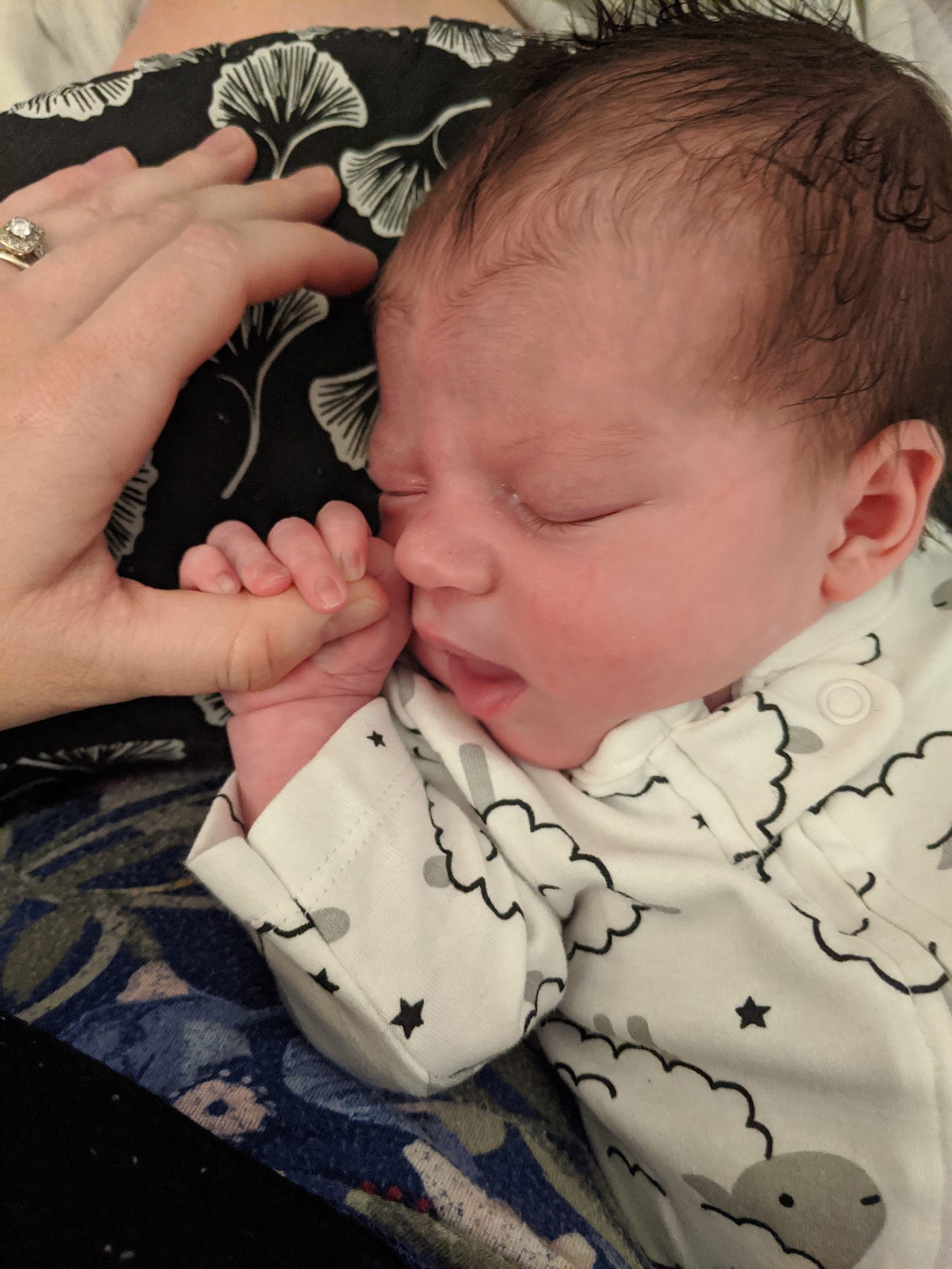
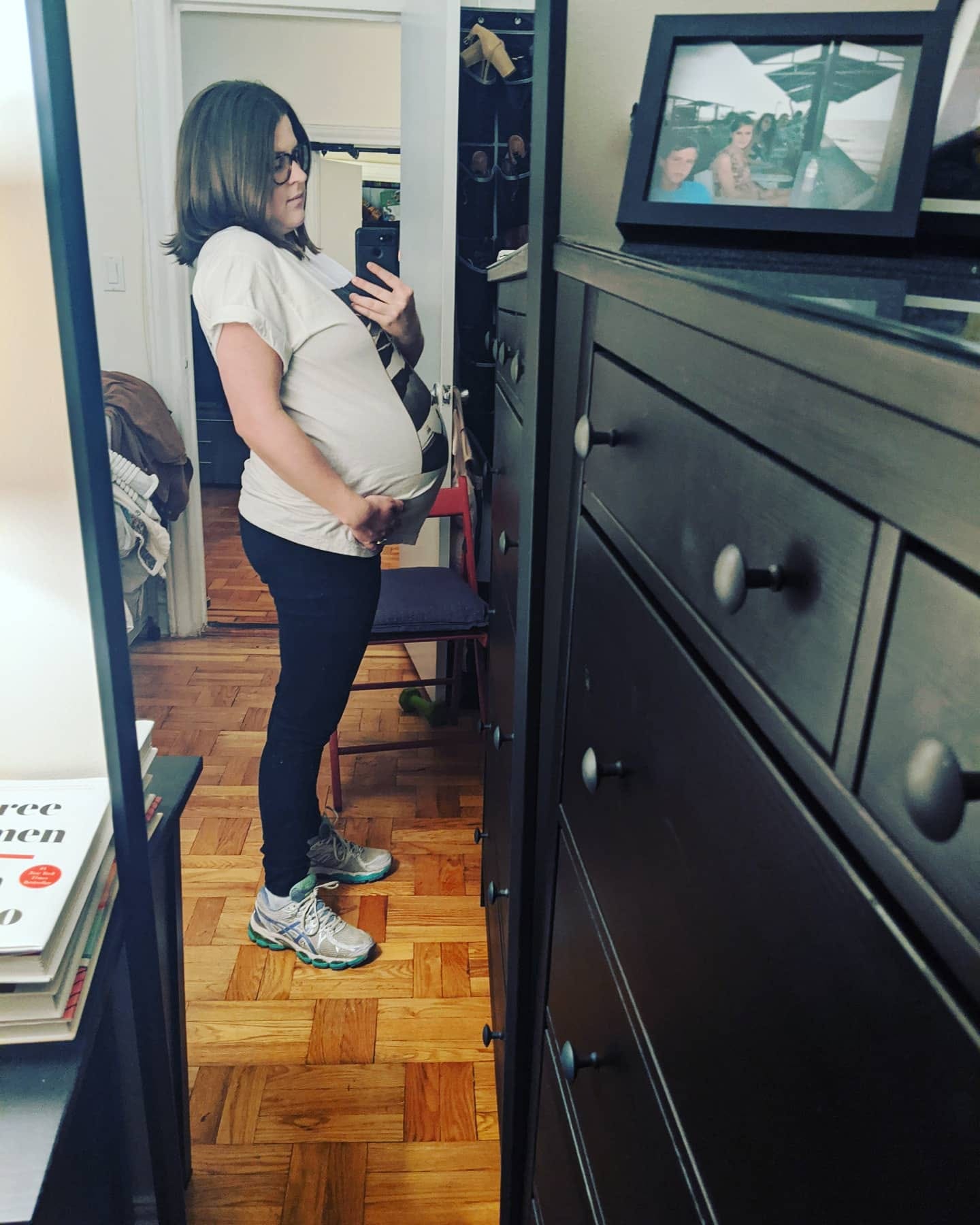
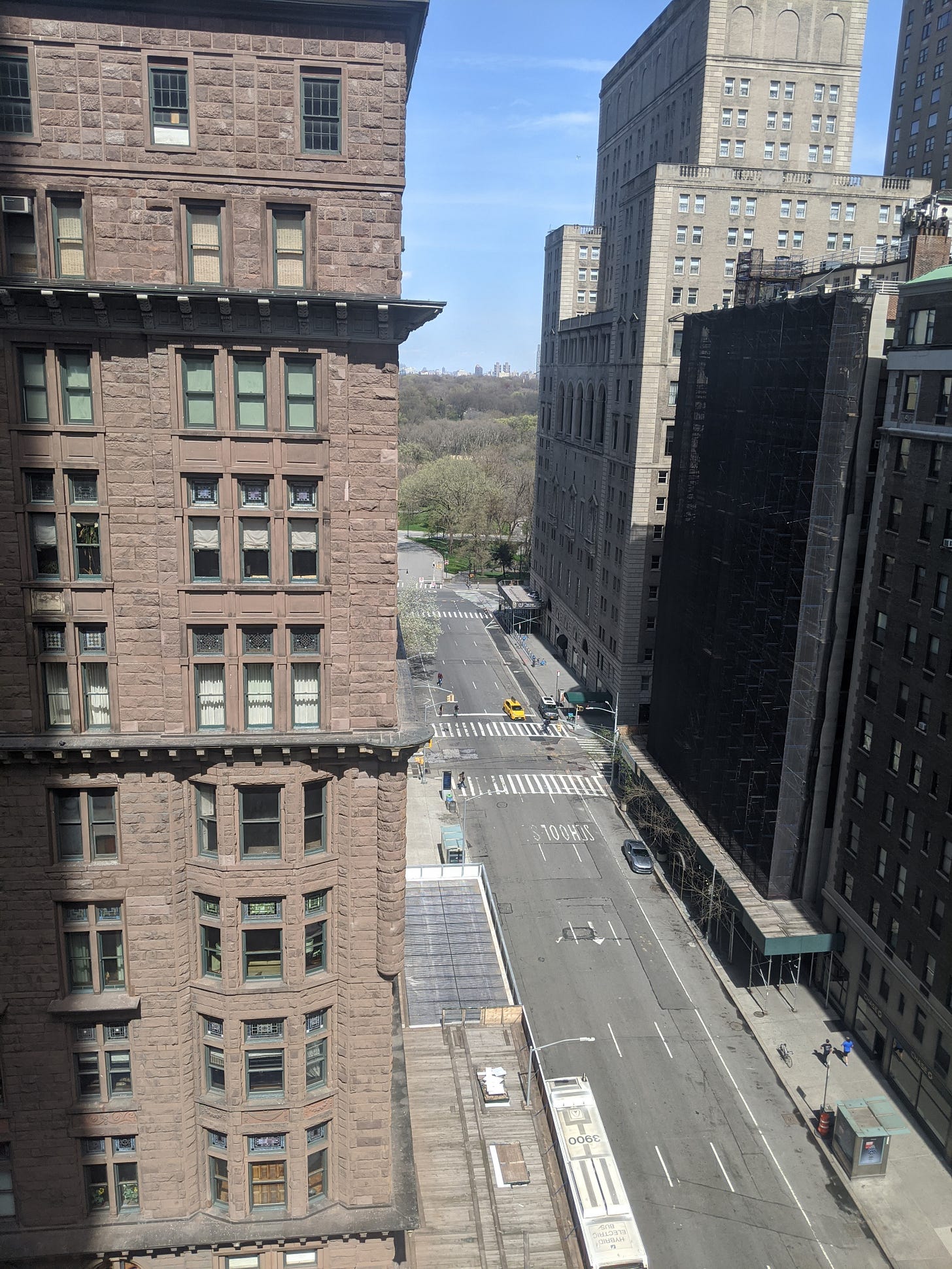
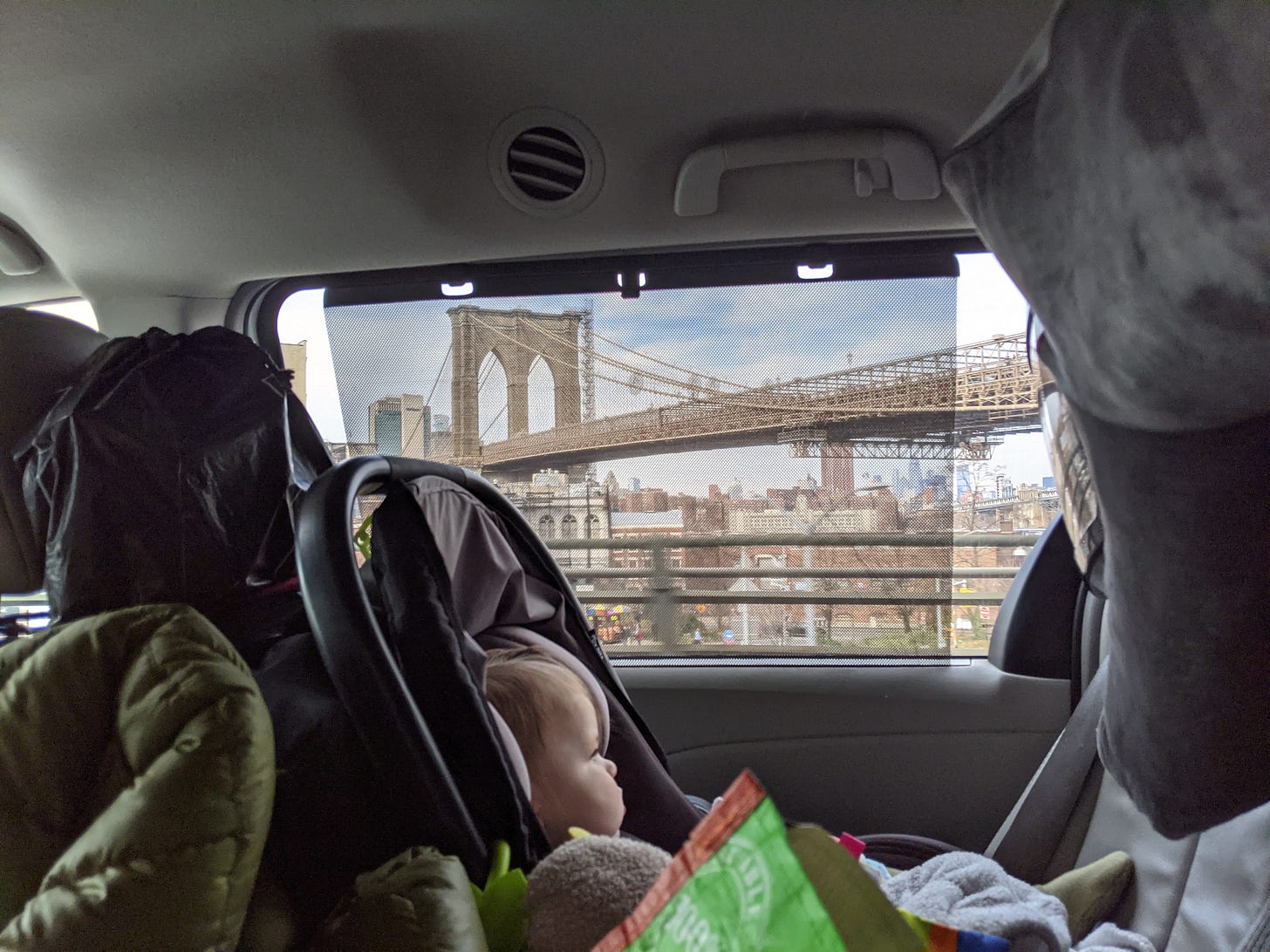
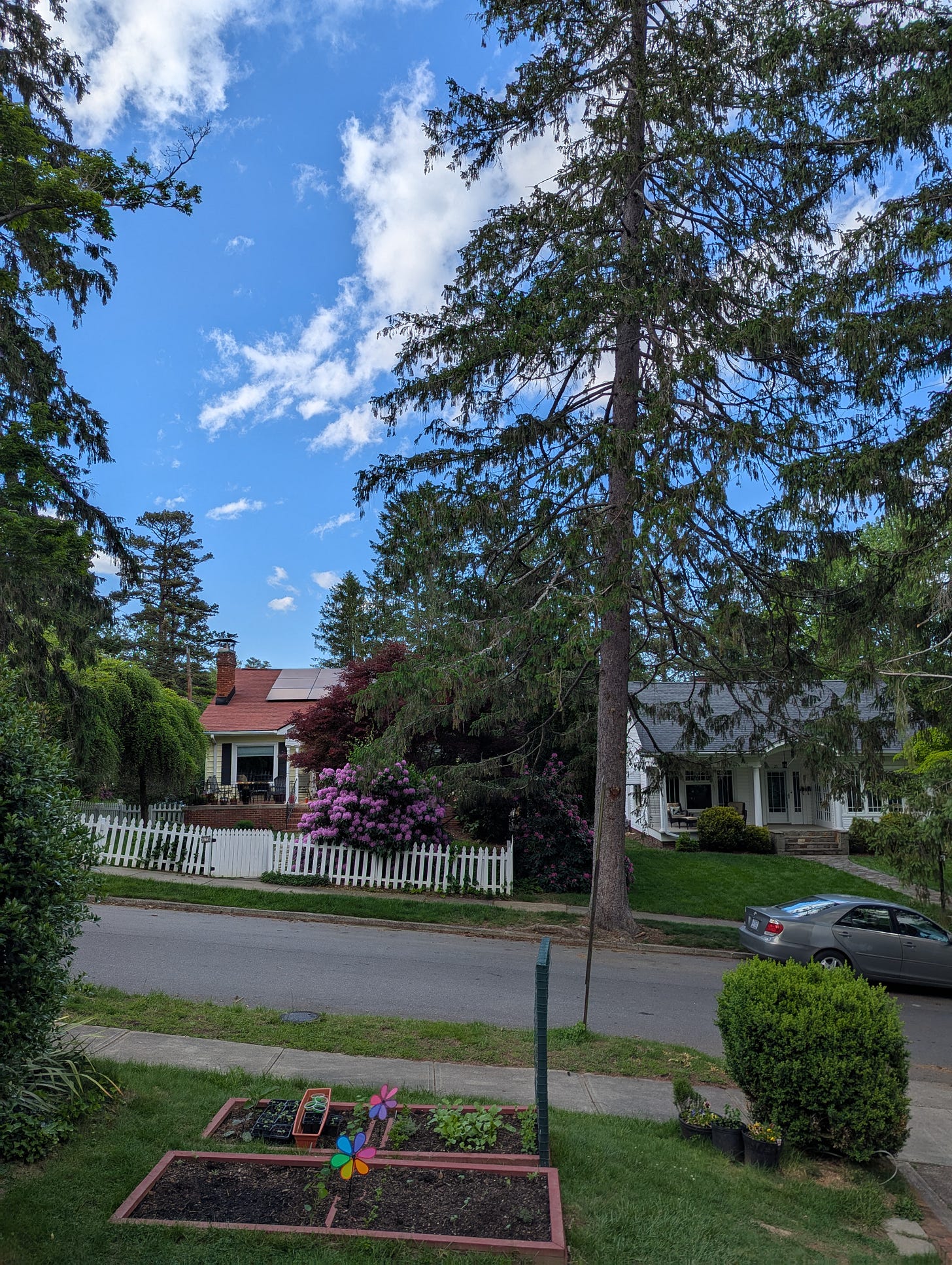
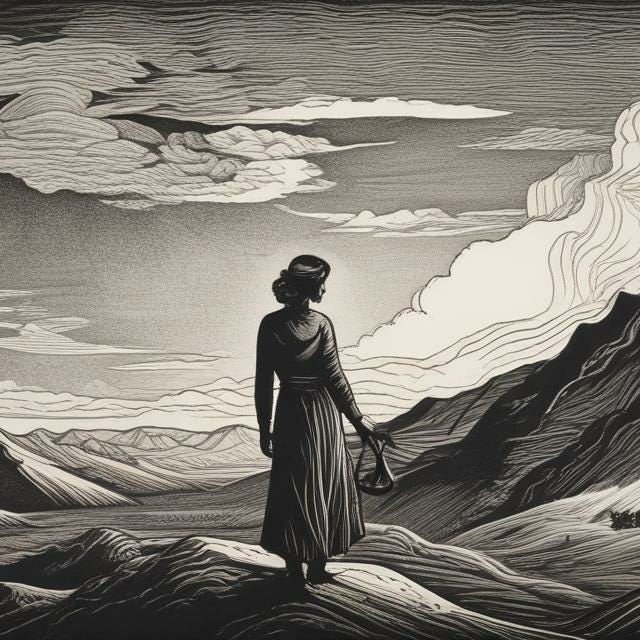
This is beautiful. COVID was an odd time to be a mother (I had a 6 month old and then was pregnant.) I also feel my children brought back joy to my life.
I had no idea the 7pm clap was done overseas, on another note, I thought it was just the UK!
Just had a chance to sit quietly with these pieces, as they deserve. Beautifully done—you will be so grateful to have captured the complexities of these eras and the decisions you’ve made. I found myself thinking “you can return to this.” I know I’ll need reminding someday on how to hold both pain and beauty, as you have. Thank you ❤️